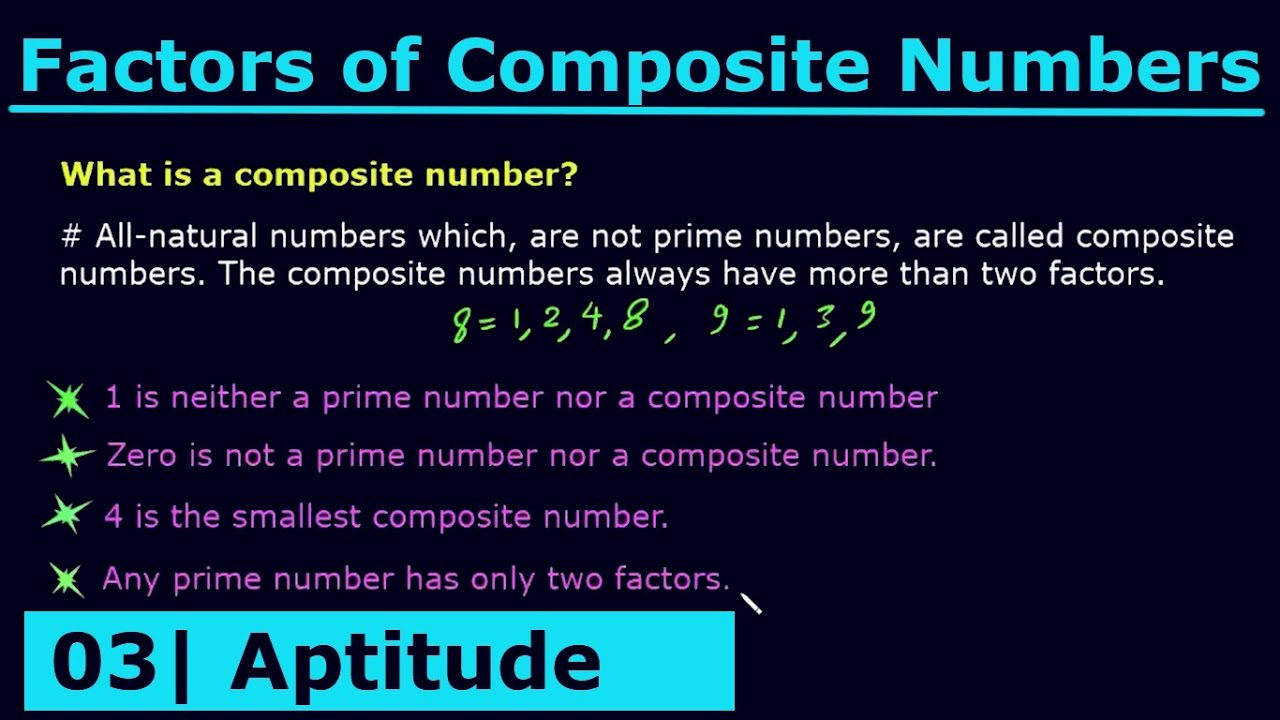What are the factors of Composite Numbers ? Factors play a crucial role in understanding the composition and structure of numbers. Consequently, composite numbers offer a fascinating array of factors that unveil intricate mathematical patterns and relationships. As such, this blog embarks on a journey to explore the factors of composite numbers, delving into methods for finding factors, expressing composite numbers in factor form, solving problems involving factors, and carrying out operations with composite numbers. Thus to summarize, by the end of this exploration, you will emerge equipped with the knowledge and skills to navigate the world of factors with confidence and proficiency.
Learnerscamp is a dedicated platform designed to assist learners in comprehensively understanding the field of mathematics and all mathematical operations. Through practical questions and clear explanations, Learnerscamp provides the essential resources to help you grasp the fundamentals of how to classify and operate natural numbers. Moreover, Learnerscamp assists students in understanding geometric equations by providing educational resources such as how to find the area of a circle, interactive lessons, and practice problems. The website offers a structured approach to learning, helping students grasp fundamental concepts and apply them to solve geometric equations effectively. Additionally, learners can benefit from personalized feedback and progress tracking, enhancing their overall comprehension of geometry.
Exploring Factors of Composite Numbers: Unraveling Mathematical Patterns
Composite numbers are natural numbers greater than 1 that have more than two distinct positive divisors. Additionally, they can be expressed as the product of two or more prime numbers. Hence, understanding the factors of composite numbers provides insights into their structure and composition.

- Finding Factors of Composite Numbers:
- 1. Trial Division Method:
Firstly, begin by dividing the number by the smallest prime number (2) and continue dividing by successive prime numbers until the quotient is 1. The divisors obtained in this process are the factors of the composite number.
- 2. Factorization Method:
Additionally, prime factorization involves expressing the composite number as a product of its prime factors. Thus, by identifying the prime factors, you can determine all the factors of the composite number.
Expressing Composite Numbers in Factor Form:
Notably, once the factors of a composite number are determined, they can be expressed in factor form. For example, the factor form of the composite number 24 is 2 x 2 x 2 x3, representing its prime factorization.
- Solving Problems Involving Factors of Composite Numbers:
Let’s tackle some word problems involving factors of composite numbers:
- 1. Example 1:
If a rectangular garden has an area of 36 square meters, and its length is 6 meters, what is the width of the garden?
Solution: The width of the garden can be found by dividing the area (36 square meters) by the length (6 meters), giving 36/6 = 6 meters.
- 2. Example 2:
If a box contains 24 chocolates, and they are to be distributed equally among 4 children, how many chocolates will each child receive?
Solution: The number of chocolates each child will receive is determined by dividing the total number of chocolates (24) by the number of children (4), giving 24/4 = 6 chocolates per child.
Operations on Composite Numbers:
- 1. Multiplication:
Multiplying two or more composite numbers yields a composite number. For example, 4 x 6 = 24.
- 2. Division:
Dividing one composite number by another may yield a composite number, a prime number, or a fraction. For example, 24/ 6 = 4.
Conclusion:
In conclusion, exploring the factors of composite numbers unveils fascinating mathematical patterns and relationships. Thus, by understanding methods for finding factors, expressing composite numbers in factor form, solving problems involving factors, and carrying out operations with composite numbers, individuals enhance their mathematical fluency and problem-solving skills. Owing to this, let’s embrace the complexity and beauty of composite numbers, armed with the knowledge and skills to unravel mathematical mysteries with confidence and proficiency.
So, the next time you encounter a composite number, remember to explore its factors and dive deep into its mathematical structure, uncovering patterns and relationships that enrich your understanding of numbers and mathematics.




